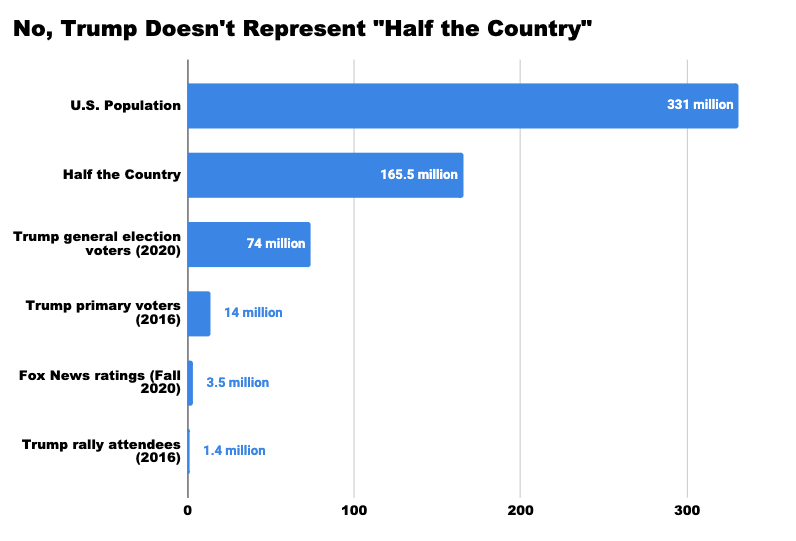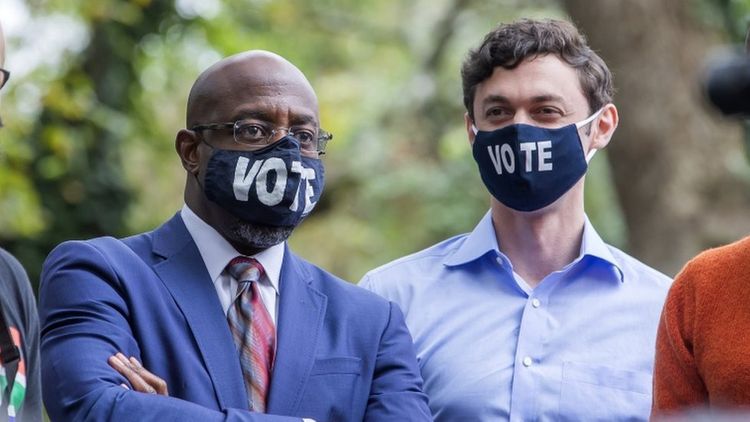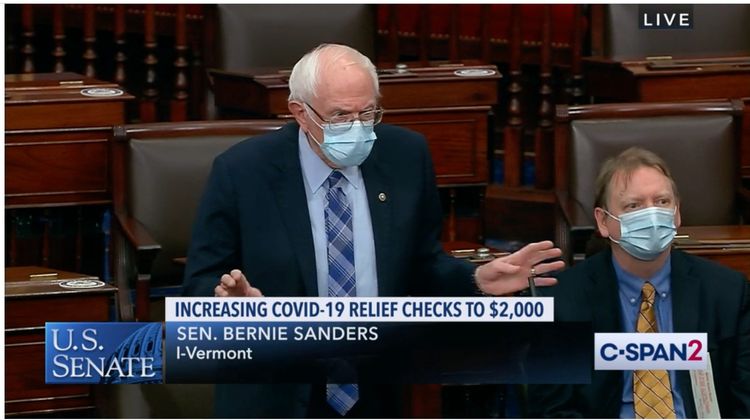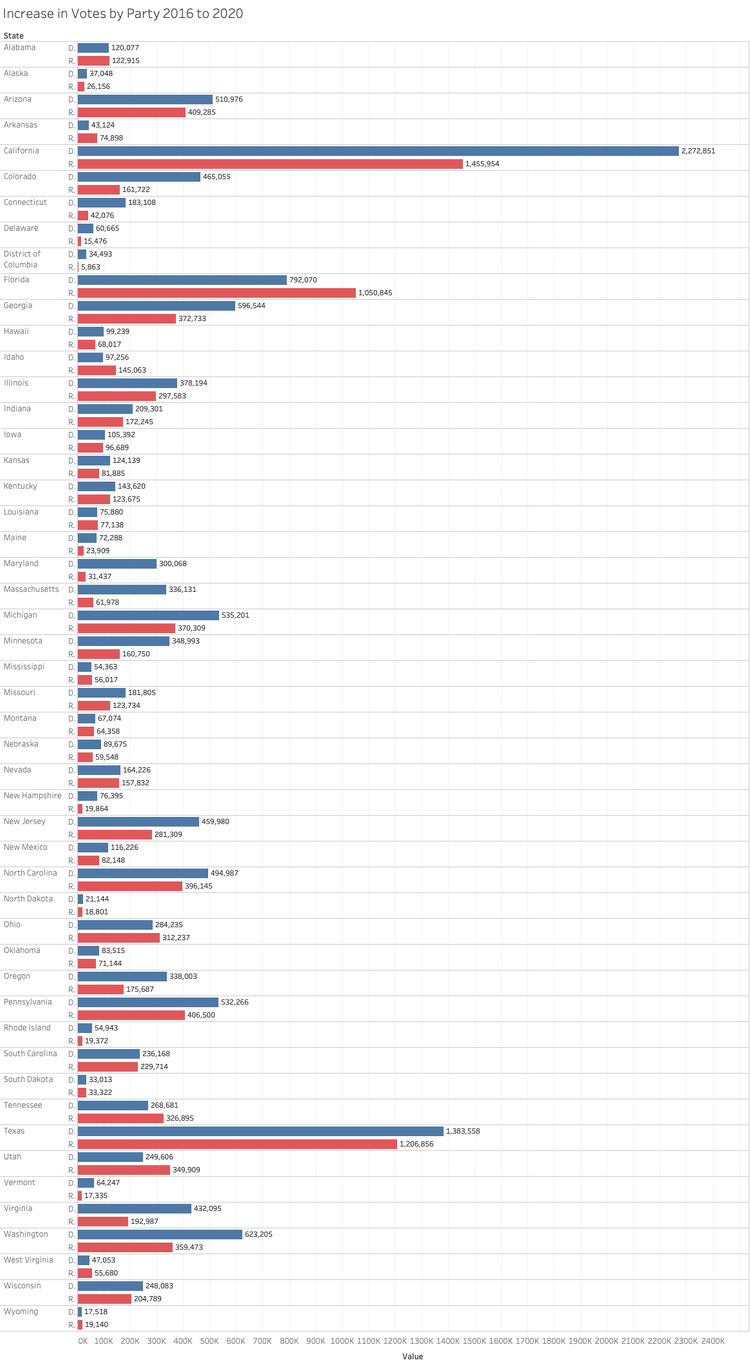No, Trump Does Not Represent Half the Country

Despite losing a major presidential election, conservatives are urging liberals to earnestly listen to “half the country” that voted for Trump. But are we really talking about “half the country”?
There are 331 million people in America. That means “half the country” is 165.5 million people.
Did either candidate win support from “half the country”? No. In fact, no presidential candidate has ever received support from more than 50 percent of the population.
Trump received 74 million votes, or about 22% of the country. Biden, meanwhile, received 80 million votes, or about 24% of the country. So Trump voters constitute a little more than 1/5 of the country while Biden’s are a little less than 1/4.
As I like to say, democracy is pretty cool. We should try it some time.
But what about Trump’s base?
In the 2016 Republican primary, Trump received 14 million votes. That was enough to secure his party’s nomination for the presidency. But it’s just 4.2 percent of the country.
How about the people who regularly watch Fox News? The network’s highest ratings this fall hit 3.5 million people, or about 1 percent of the country.
How about the people who attended Trump’s rallies? If we add up the attendance at every 2016 Trump rally, it’s 1.4 million people. A lot of them were repeat attendees, but let’s be generous and count them all. Trump rally attendees represent 0.4 percent of the country.
Think of all the times you’ve seen Trump supporters in red hats on TV, in online news coverage, or on your social media feeds. They don’t represent “half the country.” They represent less than one half of one percent of the country.

So why do conservatives consistently say they represent “half the country”? It’s a rhetorical sleight of hand meant to inflate their support. In reality, conservatives represent a minority of the population and a minority of voters. That’s understandable. They have a lot of unpopular policy positions on issues like cutting Social Security and taking away people’s healthcare, curtailing reproductive freedom and denying climate change.
By appealing to an ill-defined “half the country” conservative commentators avoid discussing policy and bully liberals into accepting reactionary cultural grievances as somehow more popular than taxing the rich, legalizing weed, creating millions of clean energy jobs and instituting universal healthcare.
At the same time, Democrats don’t represent half the country either. The ranks of non-voters are filled with many people who are not eligible to vote in federal elections. That includes people who are too young to vote and people who don’t meet citizenship requirements. It also includes millions of people who are disenfranchised due to Jim-Crow-era laws that strip people of their voting rights.
Even this year’s remarkably high turnout may wind up constituting something like 67 percent of all eligible voters. That means there will be roughly as many non-voters as there are Trump voters or Biden voters.
If you love democracy, maybe that feels despair-inducing. But it’s also an object lesson for people who desire a more humane, just politics. An excited based of just 0.4% can help catapult a candidate to the presidency. A cable news network that appeals to just 1% of the country can exert a remarkable pull on an entire political party. And a political movement capable of gaining mass support from a multi-racial coalition of working people—something closer to half of the actual country—would be a dominant force for good in American life for decades to come.
I discussed this more on my podcast here. I’ll also cover it on Twitch and Youtube at some point. It’s a very basic idea, but the rhetoric of “half the country” is absolutely misleading in this context, so glad it’s resonating with folks.




